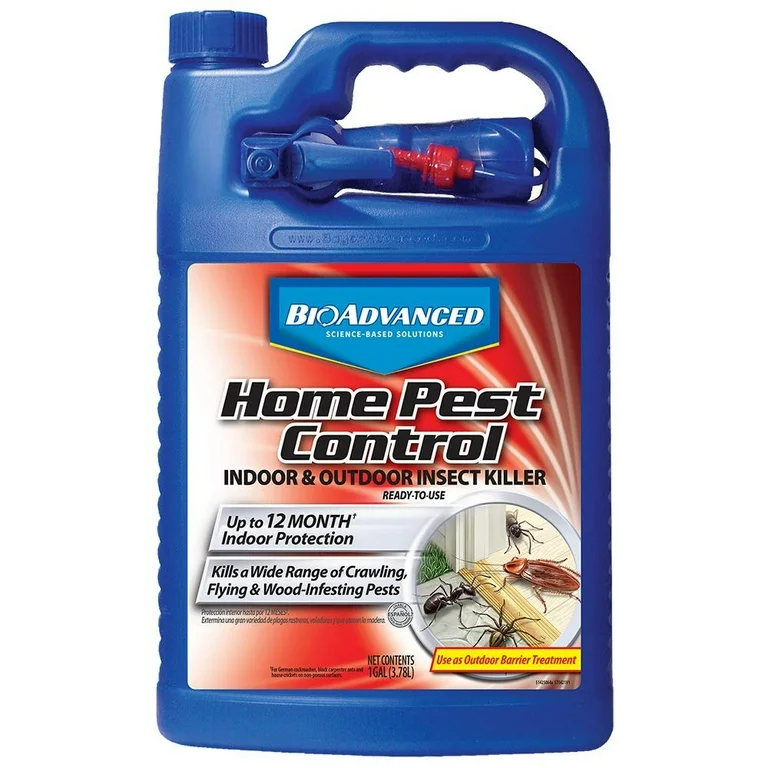High Quality A1 Pest Control Services Charlotte - Secure Your Home
Wiki Article
Bed Bug Treatment Malfunction: Comparing Chemical Vs. Non-Chemical Solutions
In the realm of insect control, specifically when taking care of the persistent issue of bed insects, the selection between chemical and non-chemical therapy services can be an essential one. Both strategies provide distinct advantages and disadvantages, affecting variables such as effectiveness, security considerations, and general price. By analyzing the nuanced details of each technique, a more clear understanding of which course to go after in addressing a bed bug problem can be obtained.Performance of Chemical Treatments
Chemical treatments for bed insect infestations have actually been commonly identified for their powerful and fast efficacy in removing these pests. When considering the efficiency of chemical treatments, it is crucial to comprehend that they can give a detailed and quick service to a bed pest issue.Furthermore, chemical treatments have the benefit of offering residual results, indicating that they can continue to remove bed pests even after the first application. This residual action is specifically advantageous in combating any prospective re-infestations. Additionally, the fast action of chemical therapies can bring alleviation to people encountering serious bed bug infestations, enabling them to restore control of their living rooms swiftly.
Safety And Security Worry About Chemical Solutions
One crucial element that calls for cautious factor to consider when making use of chemical solutions for bed pest treatment is ensuring the security of owners and the environment. While chemical treatments can be reliable in eliminating bed pests, they may present dangers if not dealt with correctly. One of the primary safety and security interest in chemical solutions is the prospective damage they can create to human health. Direct exposure to particular chemicals made use of in bed pest therapies can cause respiratory system problems, skin irritability, or other adverse reactions, especially in individuals with pre-existing conditions or sensitivities. Additionally, inappropriate application or dosage of chemical pesticides can lead to toxic deposits sticking around in the cured area, presenting lasting health and wellness risks to passengers.Furthermore, the environmental influence of chemical services is another significant factor to consider. Some pesticides used in bed bug treatments may be unsafe to useful insects, wild animals, and environments if they leach right into the dirt or water supply. It is vital to use chemical therapies deliberately, following safety and security standards, and taking into consideration much less hazardous alternatives to minimize these dangers and make sure the effective and secure monitoring of bed bug invasions.
Benefits of Non-Chemical Techniques
Taking into consideration the prospective safety and security problems and environmental influence connected with chemical remedies for bed bug therapy, discovering non-chemical methods provides an encouraging option with numerous unique benefits. Non-chemical methods offer a much safer choice for households, particularly those with individuals, pets, or children delicate to harsh chemicals. These approaches remove the risks of exposure to harmful materials, decreasing the potential for damaging health and wellness results. Additionally, non-chemical therapies are ecologically friendly, as they do not contribute to air or water air pollution, making them a sustainable choice for bug control.Furthermore, non-chemical services can be efficient in targeting bed pests, i thought about this consisting of hard-to-reach areas where chemical treatments may not penetrate. Techniques such as heat treatment, vacuuming, steam cleansing, and bed mattress coverings supply complete elimination without the usage of damaging chemicals. Additionally, non-chemical methods can be much less turbulent, calling for very little preparation and allowing for quicker reentry right into dealt with locations. On the whole, deciding for non-chemical bed insect therapy techniques not just prioritizes security and environmental management however likewise ensures effective and thorough bug control.
Limitations of Non-Chemical Treatments

In addition, non-chemical therapies often call for several applications to accomplish effective obliteration. This can be time-consuming and might not constantly ensure complete removal of all bed bugs and their eggs, particularly in hard-to-reach or hidden areas.
Moreover, the success of non-chemical therapies heavily counts on proper execution and thoroughness, which can be challenging for people without expert proficiency. Insufficient application of non-chemical approaches might result in insufficient elimination, original site causing relentless infestations and the need for added treatments.
Consequently, while non-chemical therapies have their advantages, it is crucial to acknowledge these limitations and consider them when establishing the most efficient technique for managing bed bug infestations.
Expense Contrast: Chemical Vs. Non-Chemical Options
Given the restrictions associated with non-chemical treatments, a vital element to review in the context of bed bug monitoring is the price contrast between chemical and non-chemical options. In contrast, non-chemical treatments like warmth treatment or steam can be a lot more expensive, with expenses ranging from $1,000 to $6,000 for a whole home. While the preliminary price of chemical treatments may appear reduced, numerous treatments might be required to fully eliminate the infestation, potentially boosting the overall price.Conclusion

Thinking about the potential safety and security concerns and ecological impact associated with chemical remedies for bed insect treatment, checking out non-chemical techniques offers an encouraging choice with a number of unique advantages.Offered the restrictions associated with non-chemical treatments, a vital aspect to assess in the context of bed insect monitoring is the cost comparison between chemical and non-chemical choices. In comparison, non-chemical treatments like heat treatment or vapor can be a lot more costly, with costs varying from $1,000 to $6,000 for a whole home. While the initial expense of chemical therapies may seem lower, numerous treatments may be needed to totally get rid of the problem, possibly enhancing the general price.In verdict, when contrasting chemical and non-chemical bed bug ant pest control treatment choices, it is important to think about efficiency, safety, benefits, limitations, and cost.
Report this wiki page